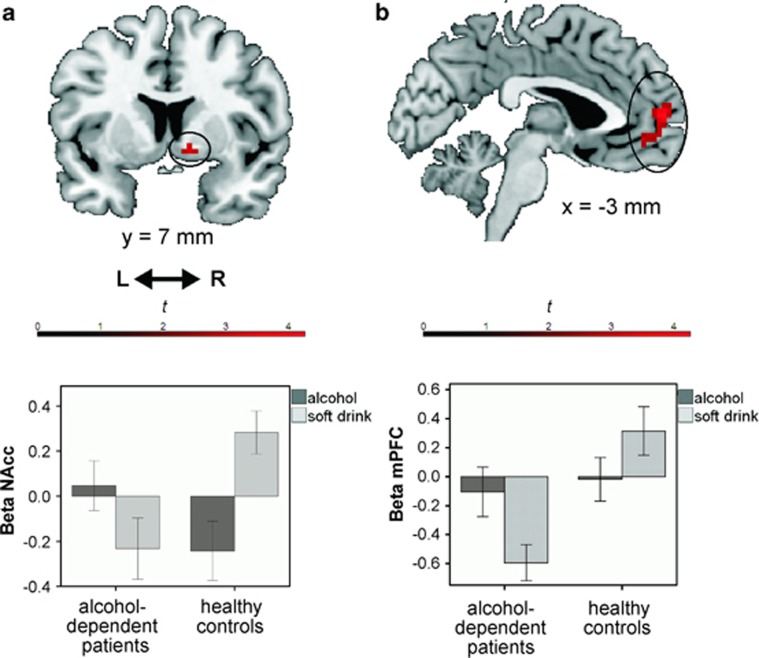Figure 4.
Nucleus accumbens (NAcc; a) and medial prefrontal cortex (mPFC; b) showed higher blood-oxygen-level-dependent (BOLD) response in alcohol-dependent patients compared with healthy controls in the alcohol-approach bias contrast (approach alcohol>avoid alcohol)>(approach soft drink>avoid soft drink). The effects were significant at p<0.05 (family-wise error (FWE) corrected and small-volume correction (SVC)). For visualization, activations within our NAcc regions of interest (ROI; a) and our mPFC ROI (b) are plotted with a threshold of p<0.005 uncorrected, on a standard anatomical brain template using MRIcron software. Bar plots of mean β-values per stimulus category (alcohol/soft drink) and per group (extracted from all voxels that were active at p<0.005 uncorrected) are for visualization purposes only. As performing post-hoc tests on these extracted β-values would be considered double dipping (Kriegeskorte et al, 2010), post-hoc Student's t-tests on separate approach tendency contrasts were performed using our a-priori NAcc and mPFC ROIs. These revealed that there were no group differences in approach tendency-related activity for alcohol (approach alcohol>avoid alcohol; p>0.005 uncorrected). In contrast, approach tendency-related activity for soft drinks (approach soft drink>avoid soft drink) was larger in healthy controls than alcohol-dependent patients, both in the NAcc (p<0.05, FWE) and mPFC (p<0.05, FWE).

